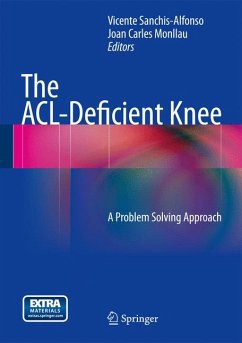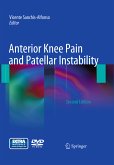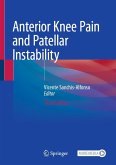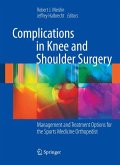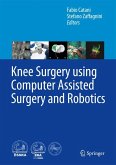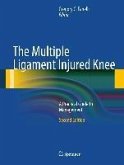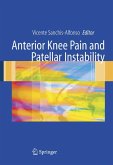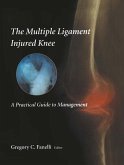The ACL-Deficient Knee (eBook, PDF)
A Problem Solving Approach
Redaktion: Sanchis-Alfonso, Vicente; Monllau, Joan Carles


Alle Infos zum eBook verschenken

The ACL-Deficient Knee (eBook, PDF)
A Problem Solving Approach
Redaktion: Sanchis-Alfonso, Vicente; Monllau, Joan Carles
- Format: PDF
- Merkliste
- Auf die Merkliste
- Bewerten Bewerten
- Teilen
- Produkt teilen
- Produkterinnerung
- Produkterinnerung

Hier können Sie sich einloggen

Bitte loggen Sie sich zunächst in Ihr Kundenkonto ein oder registrieren Sie sich bei bücher.de, um das eBook-Abo tolino select nutzen zu können.
The ACL-Deficient Knee: A Problem Solving Approach, focuses on problem analysis and problem solving, as well as analyzing the possibility of prevention. In each chapter, the biomechanics, anatomy, etc. that are relevant to the topic are reviewed. There are chapters where highly specialized surgical techniques are presented (v. gr. double bundle reconstruction or meniscal transplant), as well as developing areas such as ACL tears in children, where we are finding a growing number of injuries due to the increase of sports at early ages.
These chapters are written by internationally renowned…mehr
- Geräte: PC
- ohne Kopierschutz
- eBook Hilfe
- Größe: 20.78MB
![Anterior Knee Pain and Patellar Instability (eBook, PDF) Anterior Knee Pain and Patellar Instability (eBook, PDF)]() Anterior Knee Pain and Patellar Instability (eBook, PDF)81,95 €
Anterior Knee Pain and Patellar Instability (eBook, PDF)81,95 €![Anterior Knee Pain and Patellar Instability (eBook, PDF) Anterior Knee Pain and Patellar Instability (eBook, PDF)]() Anterior Knee Pain and Patellar Instability (eBook, PDF)89,95 €
Anterior Knee Pain and Patellar Instability (eBook, PDF)89,95 €![Complications in Knee and Shoulder Surgery (eBook, PDF) Complications in Knee and Shoulder Surgery (eBook, PDF)]() Complications in Knee and Shoulder Surgery (eBook, PDF)81,95 €
Complications in Knee and Shoulder Surgery (eBook, PDF)81,95 €![Knee Surgery using Computer Assisted Surgery and Robotics (eBook, PDF) Knee Surgery using Computer Assisted Surgery and Robotics (eBook, PDF)]() Knee Surgery using Computer Assisted Surgery and Robotics (eBook, PDF)81,95 €
Knee Surgery using Computer Assisted Surgery and Robotics (eBook, PDF)81,95 €![The Multiple Ligament Injured Knee (eBook, PDF) The Multiple Ligament Injured Knee (eBook, PDF)]() The Multiple Ligament Injured Knee (eBook, PDF)81,95 €
The Multiple Ligament Injured Knee (eBook, PDF)81,95 €![Anterior knee pain and patellar instability (eBook, PDF) Anterior knee pain and patellar instability (eBook, PDF)]() Anterior knee pain and patellar instability (eBook, PDF)145,95 €
Anterior knee pain and patellar instability (eBook, PDF)145,95 €![The Multiple Ligament Injured Knee (eBook, PDF) The Multiple Ligament Injured Knee (eBook, PDF)]() The Multiple Ligament Injured Knee (eBook, PDF)65,95 €
The Multiple Ligament Injured Knee (eBook, PDF)65,95 €-
-
-
These chapters are written by internationally renowned specialists who are pioneers in the topics analyzed.
To further enhance the educational content, there is a collection of online step by step surgical technique videos that will allow the knee specialist to perform the techniques presented in this book.
Dieser Download kann aus rechtlichen Gründen nur mit Rechnungsadresse in A, B, BG, CY, CZ, D, DK, EW, E, FIN, F, GR, HR, H, IRL, I, LT, L, LR, M, NL, PL, P, R, S, SLO, SK ausgeliefert werden.
- Produktdetails
- Verlag: Springer London
- Seitenzahl: 414
- Erscheinungstermin: 18. Dezember 2012
- Englisch
- ISBN-13: 9781447142706
- Artikelnr.: 43794686
- Verlag: Springer London
- Seitenzahl: 414
- Erscheinungstermin: 18. Dezember 2012
- Englisch
- ISBN-13: 9781447142706
- Artikelnr.: 43794686
- Herstellerkennzeichnung Die Herstellerinformationen sind derzeit nicht verfügbar.
